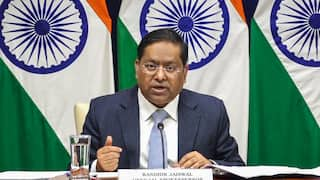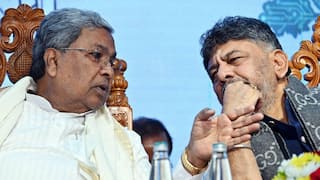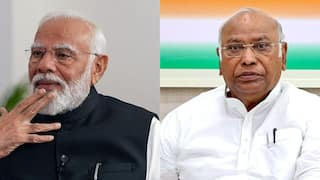Union Budget 2022: India Expects Reform-Oriented Budget To Further Strengthen Macroeconomic Resilience

The Union Budget 2022-23 will be presented for the second time in a row during the Covid-19 pandemic. Over the last many quarters, the government has announced various reform measures to address the supply constraints, rejuvenate the consumption demand, provide handholding to the MSMEs, among others, which have strengthened the macroeconomic resilience of the country.
The recent GDP growth estimate of 9.2 percent for FY21-22 released by the NSO, along with the performance of key economic and business indicators, reflects that the growth trajectory has been rejuvenated from the severe contraction of FY20-21 caused by the pandemic. To carry on with this momentum, the industry, trade, and economy need continuous facilitation.
At this juncture, the Union Budget will be pivotal in defining the way forward for the economy and fulfilling the aspirations of more than 138 crore people of India. The focus of the Budget should be on refuelling the consumption demand, which will have a multiplier effect on production possibilities, private investments, and employment creation.
To have such outcomes, there is a need to ensure hassle-free credit availability to industry, particularly for the MSMEs, ease of doing business for the MSMEs, reducing costs of doing business, creating a level playing field for the industry, and timely justice for people and industry. Reduced costs of doing business and a level playing field in the country will increase the competitiveness of our industry and exporters and will reduce imports of the items where India has domestic capabilities. The government should focus on reducing the cost of doing business, including (1) costs of capital, (2) costs of power, (3) costs of logistics, (4) costs of land and availability of land, (5) costs of labour, availability of skilled labour, and (6) costs of compliances.
Taking into consideration the MSME sector’s top-notch contribution to the economic and social development of the country, strengthening the sector is crucial to sustain the recovery. The MSMEs have been playing an unprecedented role in various prominent aspects of the economy, including a contribution of around 30 per cent in the GDP, around 37 per cent in all India manufacturing gross value output manufacturing, more than 49 per cent in total exports, employment to around 11.1 crore, research and innovations, among others. Through various government reforms and measures, the MSMEs can greatly contribute in job creation as well as in the journey of new and vibrant India, going ahead.
Although, the government has undertaken various meaningful and effective reform steps for the MSME sector during the past 21 months for mitigating the daunting impact of Covid-19, the MSMEs are still in a recovery phase and looks forward to continuous handholding by the government, especially during the uncertainty caused by the impact of omicron variant.
At this juncture, the timeline of Emergency Credit Line Guarantee Scheme (ECLGS) should be extended for another year until March 31, 2023. On the taxation front, we appreciate the reduction in corporate tax from a peak rate of more than 30 per cent to an effective rate of around 25 per cent. However, to benefit the entire MSME sector, there should be a reduction in tax on the MSME firms working as proprietorship/ partnerships. Hence, taxes should come down on these types of businesses, going forward. For such businesses, the maximum tax slab should be brought down to 25 per cent.
Also, for the new units, the effective rate is around 17 per cent. So, we suggest enabling the entities to take benefit of Section 115BAB. The time limit allowed to start manufacturing by a new unit may be extended by at least a period of 24 months i.e the new unit shall be allowed to start manufacturing by March 31, 2025.
To give a great momentum to exports, export income should be made tax-free for the MSMEs for three years and income of large enterprises from incremental exports (Y-o-Y) be made tax-free. This will help in partly compensating the additional cost of logistics and other bottlenecks which Indian exporters face.
The raw material prices have increased significantly during the past year. This, along with the shortages of raw material, is impacting the production possibilities and anticipated sales volumes. Also, high commodity prices are posing a challenge to the small businesses to operate as these impact their costs of production and affect their competitiveness in the domestic and international markets. The applicable Basic Custom Duty (BCD) needs to be reduced by 50 per cent on raw materials for manufacturers.
The agriculture sector has been a low-hanging fruit of the Indian economy which has shown its resilience during the pandemic. The sector has a huge potential if effectively facilitated by the government reforms. In the Budget, the public investments in agriculture infrastructure must be increased to attract private investments in the area of agri-business and reduce the agri-wastages.
On the socio-economic front, focus on twin merit goods of education with skill development and basic health with safety must continue with a longer-term vision. Focus on education as well as skill development is the need of the hour in order to reap the dividends of our demographic advantage that would hold a crucial place for supporting India in its journey towards being Aatmanirbhar. The education expenditure as a percentage of the GDP needs to be maintained above the level of 3 per cent.
The pandemic has brought the country's health infrastructure into sharp focus, highlighting the critical spot of the public health sector and the need for increased government spending on public health. Continued focus on the expenditure on health infrastructure is required to make country ready to fight the new emerging variants of coronavirus.
Last but not the least, to increase the tax base there is a need to encourage people to pay the taxes with lucrative tax-paying benefits such as providing a threshold of pension (after their retirement above the age of 60 years) for those who pay taxes continuously and honestly. This will increase the tax base in the country.
The rationalisation of the tax slabs is important as it would create tremendous demand in the economy, subside the inflationary pressures, enhance the sentiments of producers, and create employment opportunities for the growing workforce in the country. The GST rates should be rationalised into three major slabs -- 5 percent, 10 percent, and 15 percent -- along with a few sin goods in the slab of 28 percent. There should be minimum items in the category of Sin Goods which is rated in the 28 percent brackets.
We hope that the announcements made in the Union Budget will further boost the macroeconomic resilience of the economy by strengthening the foundations of various key sectors of the economy and providing handholding to the trade and industry; to not only support their full recovery from the impact of Covid but also creating a bright future for them to look forward to.
The writer is president, PHD Chamber of Commerce and Industry
[Disclaimer: The opinions, beliefs, and views expressed by the various authors and forum participants on this website are personal and do not reflect the opinions, beliefs, and views of ABP News Network Pvt Ltd.]


























